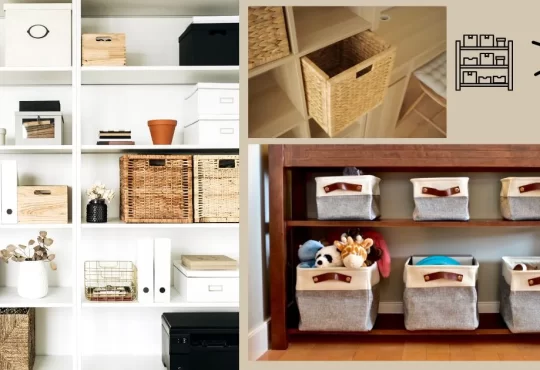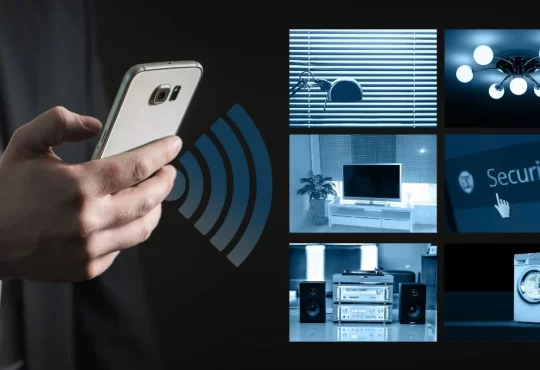In today’s world, where sustainability has become a necessity rather than a choice, smart trash bins are revolutionizing the way waste is managed. These next-generation bins, equipped with automatic sorting technology-, make recycling simpler, faster, and far less error-prone. Using advanced sensors, AI-powered recognition systems, and robotic mechanisms, smart trash bins can identify materials such as plastics, paper, glass, and organics, directing each item to its proper compartment. The result is cleaner recycling streams, reduced contamination, and significantly improved efficiency in waste management processes.
Modern smart trash bins go beyond simple sorting. Many feature real-time data tracking and app-based connectivity, allowing discarded items to be logged instantly and monitored for fill levels or collection needs. Deployed in commercial spaces, schools, and public areas, these intelligent bins not only streamline recycling but also serve as educational tools, providing insights into waste patterns and encouraging sustainable habits across communities.
Why It Matters
One of the most pressing challenges in recycling today is contamination. When non-recyclable items—like greasy pizza boxes, plastic bags, or food waste—are mixed in with recyclable materials, the entire batch can become unusable. This means that even if people diligently separate their trash, a single mistake can send pounds of otherwise recyclable materials straight to the landfill. In fact, contamination rates in some regions reach as high as 25% to 30%, undermining the effectiveness of recycling programs and discouraging both municipalities and individuals from participating.
Smart trash bins tackle this issue at its root by using sensors, AI, and automated sorting mechanisms to separate waste accurately. By removing human guesswork, they dramatically reduce contamination rates and increase the chances that materials actually make it through the recycling process. This improvement doesn’t just help the environment—it has a ripple effect across the entire waste management chain. Recycling facilities spend less time and money manually sorting or discarding spoiled batches, municipalities save on landfill fees, and natural resources are conserved by reintroducing cleaner materials into the production cycle.
Challenges and the Road Ahead
Like most innovations, smart trash bins don’t come without challenges. A significant barrier to widespread adoption is the high cost associated with production and implementation. The advanced sensors, AI-driven recognition software, and mechanical sorting systems that make these bins “smart” are expensive to design, manufacture, and maintain. This puts them out of reach for many households and even small businesses, limiting their use mostly to pilot programs, corporate campuses, or municipalities with the budget to experiment. Until production becomes more scalable and prices drop, smart bins will remain a niche solution rather than a mainstream staple.
Another hurdle is the reliability of recognition technology. While AI is improving rapidly, it can still struggle with tricky items like food-soiled packaging, multi-layer plastics, or materials that vary by brand and region. For example, a yogurt cup might be recyclable in one city but classified as waste in another. This leads to the second major challenge—inconsistent recycling standards worldwide. What’s accepted in one region’s recycling system may be rejected in another, making it difficult to create a universal smart bin model that works seamlessly everywhere.
There are also practical considerations. Smart bins rely on power and connectivity, which may not be readily available in all environments, particularly in outdoor or low-income areas. Maintenance is another issue; if a sensor malfunctions or a sorting mechanism jams, the bin could quickly become less efficient than a traditional one. Additionally, questions around data privacy arise when bins are connected to apps and networks, especially if they’re tracking household waste patterns at scale.
How They Work
The brilliance of a smart trash bin lies in its ability to think before it “throws.” At the core is a combination of machine learning, image recognition, and sensor technology that allows the bin to identify different types of waste in seconds. When an item is dropped inside, built-in cameras and sensors scan its shape, size, colour, and even texture. Some systems also use weight sensors or infrared scanners to detect materials that look similar but behave differently—for example, distinguishing between an aluminum can and a plastic bottle.
Once the item is scanned, the data is sent to an AI-powered algorithm trained on thousands of examples of common waste items. This algorithm compares the input against its database and determines the correct category: plastics, metals, paper, glass, or organics. Advanced models can even recognize composite packaging, such as cartons lined with plastic or foil, and decide the best way to handle them based on local recycling rules.
After classification, the bin springs into action with robotic arms, conveyor belts, or internal sorting chutes that guide the waste into the proper compartment. In some designs, the bin is equipped with compactors that crush cans and bottles, maximizing storage space, while others have separate composting sections for food scraps. A few cutting-edge models even use ultrasonic cleaning systems to rinse recyclables, ensuring they’re free from contaminants before storage.
Features That Go Beyond Convenience
- App Integration – Many smart bins sync with mobile apps, providing real-time tracking of your household’s waste habits, recycling rates, and eco-footprint.
- Fill-Level Monitoring – Sensors detect when a bin is full and notify homeowners or waste collectors, helping optimize pickup schedules and reduce unnecessary trips.
- Educational Insights – By showing stats on how much waste you’re diverting from landfills, these bins encourage eco-friendly behaviour.
- Smart City Potential – In public spaces, smart bins can reduce overflow, save on collection costs, and even be powered by solar panels.
Why This Matters for the Planet
Recycling is often presented as a straightforward solution to the waste crisis, yet the process is far more complex. A major challenge lies in contamination, which occurs when non-recyclable items such as plastic bags, food-soiled containers, or organic waste enter recycling streams. Once contamination is introduced, entire batches of otherwise recyclable material may be rejected and redirected to landfills or incineration facilities. Research indicates that approximately 25–30% of recyclable materials are lost in this manner, significantly reducing the overall effectiveness of recycling programs on a global scale.
Smart bins help tackle this issue head-on by eliminating human error. By using AI, sensors, and automated sorting mechanisms, these bins ensure that items are correctly separated from the moment they’re discarded. Cleaner sorting at the source leads to higher recycling rates, which means more materials actually make it through the system and back into production. This shift has a ripple effect: it reduces the volume of waste piling up in landfills, decreases pollution caused by incineration, and lessens the demand for new raw materials.
The environmental benefits go even further. Proper sorting helps conserve energy and water—two critical resources used heavily in manufacturing virgin materials. For instance, recycling aluminum saves up to 95% of the energy needed to create it from raw ore. Recycling paper contributes to the preservation of forests and leads to a measurable reduction in greenhouse gas emissions. By increasing the efficiency and reliability of recycling streams, smart bins directly contribute to lowering our carbon footprint and preserving ecosystems.
Challenges Along the Way
While smart trash bins hold enormous promise, they are far from a perfect solution. One of the most immediate barriers is their high price point. Advanced models equipped with sensors, AI recognition systems, robotic sorting mechanisms, and connectivity features can be costly to produce and purchase. This makes them more accessible to corporations, universities, or city governments piloting sustainability programs than to the average household. Until manufacturing becomes more scalable and affordable, smart bins will likely remain a niche technology rather than a household staple.
Another significant challenge lies in the limitations of recognition technology. While AI has become highly accurate, it still struggles with ambiguous or contaminated waste—such as multi-layered packaging (like juice boxes with foil linings), greasy food containers, or plastics without clear labelling. A simple smudge of food residue can confuse the system, leading to incorrect sorting. This highlights a bigger issue: recycling is not universally standardized. Rules and accepted materials differ drastically not just from country to country, but even from one city to the next. For example, some municipalities recycle certain plastics that others send to landfills. This lack of consistency makes it difficult to design a truly universal smart bin that works everywhere.
There are also practical concerns tied to their operation. Smart bins often require a reliable power source, regular software updates, and maintenance to keep their sensors and sorting mechanisms functioning properly. In public spaces, they must also withstand vandalism, heavy usage, and weather conditions if installed outdoors. Connectivity is another factor: while app integration and real-time data are useful, not every community has the digital infrastructure to support it.
The Future of Smart Waste Management
The evolution of smart bins is only just beginning, and their future potential stretches far beyond simple sorting. As technology continues to advance, these devices could become a central piece of both smart homes and smart cities, transforming waste management into a fully data-driven and sustainable system.
At the household level, smart bins could seamlessly integrate into broader smart home ecosystems. Picture this: your kitchen bin communicates with your refrigerator and pantry, tracking what’s being thrown away and identifying patterns in food waste. Based on this data, the system could suggest recipes to help you use up ingredients before they expire, recommend portion adjustments, or even add frequently wasted items to a “do-not-buy” shopping list. Over time, this creates a closed feedback loop that helps families save money, reduce waste, and eat more sustainably. Certain emerging concepts propose bins capable of initiating composting processes automatically or coordinating with local services to arrange the collection of recyclable and organic waste.
On a larger scale, smart bins could be deployed citywide as part of smart infrastructure networks. In this vision, each bin would not only sort trash but also collect valuable data on waste trends, feeding insights back to municipalities. City planners could then analyze which neighbourhoods generate the most plastic, where food waste is highest, or how recycling behaviours change seasonally. This data could guide policy decisions, such as targeted recycling education campaigns, infrastructure investments, or even incentives for businesses to adopt eco-friendly packaging.
Intelligent Waste Management for Cleaner Communities
Smart trash bins with automatic sorting, once considered a futuristic concept, are now a present reality with the potential to redefine waste management. While not a standalone solution to the global recycling crisis, they represent a meaningful advancement toward cleaner and more sustainable communities. By simplifying the recycling process and reducing the likelihood of error, these systems streamline participation in environmental responsibility. The trajectory of waste management points toward increasing intelligence and efficiency, offering a future where sustainability is seamlessly integrated into everyday life.





